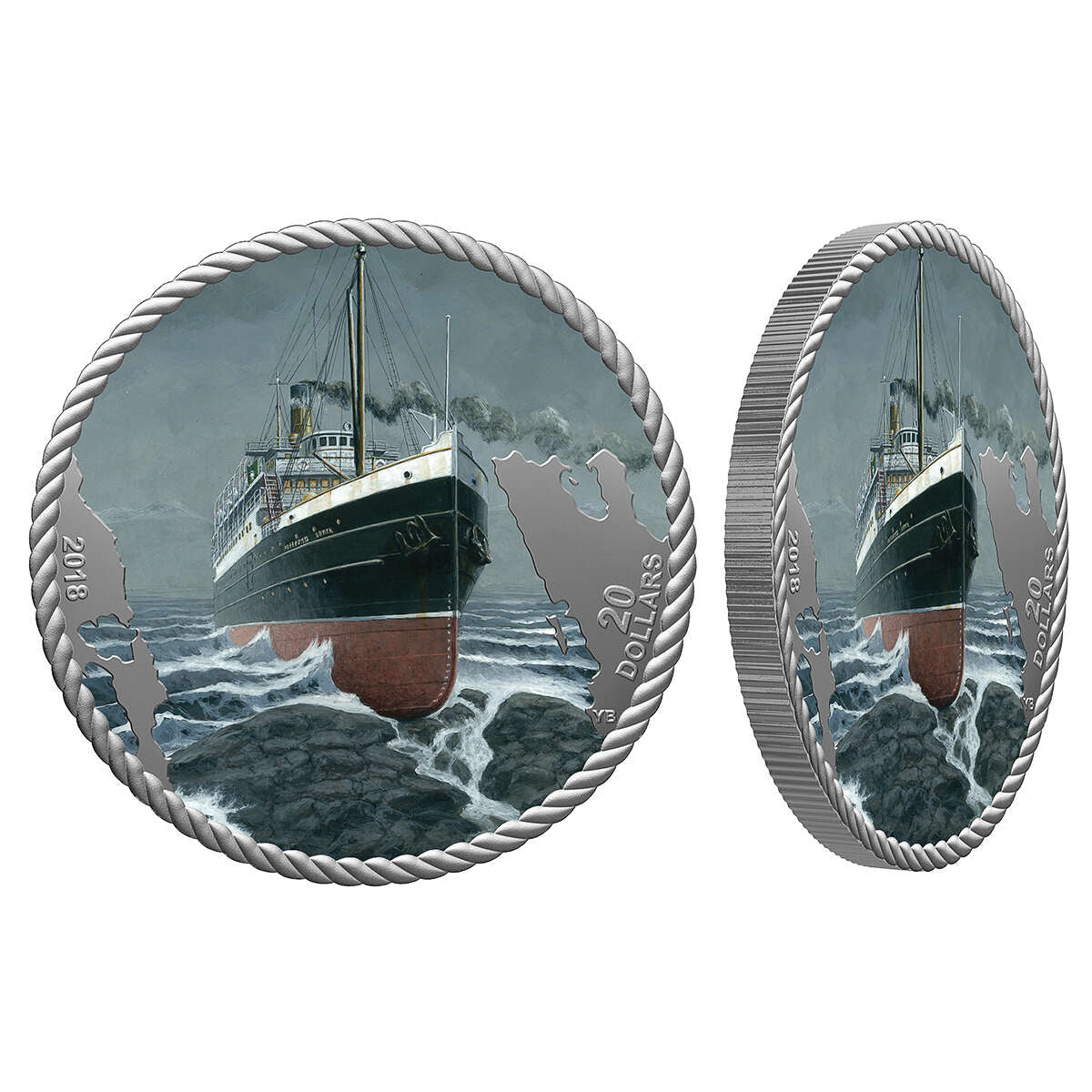Description
This 2018 $20 marks the 100th anniversary of the Canada’s worst maritime disaster along the Pacific Northwest coast. Bound for Vancouver and Victoria as well as other port-of-calls along the way, the coastal vessel SS Princess Sophia hit Vanderbilt Reef and eventually foundered on October 25, 1918, leaving no survivors. To mark the anniversary of the tragic event, this fine silver coin depicts the moment of impact in the icy waters of Alaska’s Lynn Canal when the ship struck the reef and where the ship is still located today.
The coin is dated 2018 with a $20 denomination and weighs one ounce of pure silver. Adding to its collectability, the mintage is limited to just 6,000. As a pure silver coin issued by the Royal Canadian Mint, this item is HST/GST exempt.
The Design:
The powerful reverse image by Yves Bérubé presents a dramatic depiction of an event that has been called “the unknown Titanic of the West Coast.” The artist’s choice of colours convey the rough seas in the early morning hours of October 24, 1918, when a blinding winter storm pushed the SS Princess Sophia off course and on a fateful collision with a wave-swept reef. The colourful scene shows the moment of impact, when the ship’s hull struck Vanderbilt Reef head on. The colour image fills the space between the engraved shores of Lynn Canal, the Alaskan Inlet where the events took place, which adds geographic context to the design. While the face value “20 DOLLARS”, the word “CANADA” and the year “2018” are engraved on both shores, the reverse is framed by an innovative nautical rope motif engraved to the edge. The obverse features the effigy of Her Majesty Queen Elizabeth II by Susanna Blunt.
PRINCESS SOPHIA SS:
She was stranded on Vanderbilt Reef in October 1918 during a storm, eventually sliding into deep water and killing all the estimated 350 persons aboard. The steamship, known as the “Titanic of the West Coast,” was loaded to capacity with folks heading south from Skagway for the winter. The passenger list included many of the Yukon’s leading citizens, as well as numerous passengers from Victoria and Vancouver. Although a tremendous blow to the people of the Yukon, the wreck was overshadowed in the press by the end of the First World War. The wreck now rests on a slope in 80-150 feet of water.







